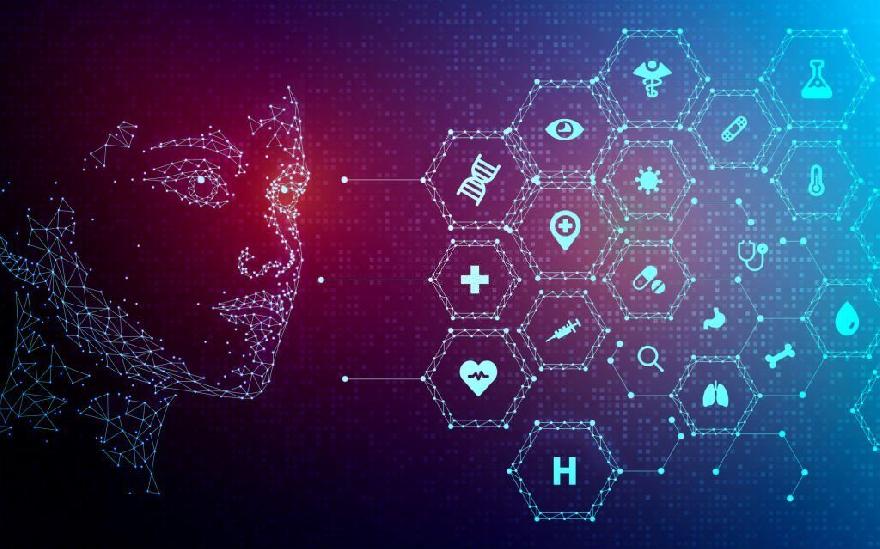The Internet of Things (IoT) has revolutionized our lives and work by incorporating technology into everyday devices, resulting in an exponential increase in connected devices that gather and exchange data. However, with the growing number of these devices, managing and comprehending the data they generate is becoming increasingly intricate.
This is where artificial intelligence (AI) steps in, presenting an opportunity to provide value to IoT applications by analyzing and interpreting data in real-time. In this piece, we will delve into how AI can amplify IoT and explore the different ways it can be employed to deliver insights and stimulate innovation.
How Artificial Intelligence Provide Value in IoT?
How can Artificial Intelligence Provide Value in IoT? One of the primary ways in which AI can provide value in IoT applications is by enabling instantaneous decision-making. The colossal volumes of data generated by connected devices make it impossible for humans to manually scrutinize and interpret this information in real-time. AI algorithms, on the other hand, can promptly process and analyze data, providing valuable insights and making recommendations for action.
For instance, in a smart building, an AI algorithm can evaluate temperature and occupancy data to regulate heating and cooling systems accordingly, leading to substantial energy savings.

Another area where AI provides value in IoT is predictive maintenance. By analyzing device performance data, AI algorithms can identify potential issues before they occur and alert maintenance teams to take corrective action. This helps to reduce downtime and prolong the life of equipment, leading to cost savings and improved efficiency.
AI can also be used to enhance security in IoT applications. By continuously analyzing network traffic and device behavior, AI algorithms can detect and alert on potential security threats. This helps organizations to respond quickly to security breaches and minimize damage.
AI algorithms and their ability to independently analyze, learn, and act
One of the key advantages of AI algorithms is their ability to evaluate data and make decisions independently. This allows IoT systems to continuously monitor and analyze data, identify trends and patterns, and make decisions based on this information. For example, in a smart building, an AI algorithm can analyze occupancy data to determine the optimal temperature for a space and adjust heating and cooling systems accordingly. This not only saves energy but also results in a more comfortable environment for building occupants.

The burgeoning quantity of information collected and scrutinized by artificial intelligence algorithms has propelled their capacity to learn and augment their precision and decision-making abilities. This incessant learning process empowers AI algorithms to adapt to new circumstances and amplify their performance over time. For instance, in the realm of anticipatory maintenance, AI algorithms can learn from performance data to precisely prophesize when a device is likely to malfunction, thereby empowering maintenance teams to take preemptive measures prior to the device’s failure.
The Best Machine Learning Example Is Deep Learning
When it concerns machine learning, deep learning is habitually cited as the preeminent exemplar. Deep learning constitutes a form of machine learning founded on artificial neural networks. The term “deep” learning alludes to the fact that deep learning algorithms employ multiple obscured layers in their artificial neural networks, enabling them to learn and model complex relationships in data. This makes deep learning especially well-suited to tasks like image and speech recognition, where there is a considerable degree of variability and complexity in the data.
In recent times, deep learning algorithms have made noteworthy strides, surpassing human-level performance in several domains. This can be imputed, in part, to the profusion of data available and the advancement of hardware that can efficiently process this data.
Another Branch of AI is Machine Learning
Machine learning is a fascinating and rapidly growing branch of artificial intelligence. It’s based on the idea that machines can be taught to learn from data and make predictions or decisions based on this knowledge. This is in contrast to traditional programming, where a programmer writes code to explicitly tell a machine what to do. With machine learning, the machine learns how to make decisions on its own, based on the data it’s given.
This enables it to adapt to new situations and continually improve its performance, making it an incredibly powerful tool for solving complex problems in various industries, including the Internet of Things. Whether it’s predicting maintenance needs, detecting security threats, or enhancing the user experience, machine learning has the potential to provide significant value in IoT applications and drive innovation in the years to come.

IoT and AI Can Be Used to Give Instructions to Machines At Home or At Work Without the Need To Speak or Type
The integration of IoT and AI has made it possible for people to interact with machines in a more natural and intuitive way. With the help of AI, IoT devices can now be controlled without the need for speaking or typing anything. This opens up a whole new world of possibilities for how we interact with machines in our homes and at work.
One example of this is the use of gesture control in smart homes. With gesture control, users can simply wave their hand or move their body to control lights, temperature, and other systems. This type of interaction is particularly useful for those with mobility impairments or who simply prefer not to use a voice-activated assistant or a physical remote control.
Another example is the use of smart glasses or wearable devices, which can be controlled by head movements, eye movements, or even heart rate. This allows users to control their devices hands-free, making it easier and more convenient to access information or perform tasks on the go.
In the workplace, IoT and AI can be used to improve productivity and efficiency by automating tasks and providing real-time information and insights. For example, in a manufacturing plant, IoT devices and AI algorithms can be used to monitor production processes, identify bottlenecks, and optimize operations in real-time.
Conclusion
The seamless integration of IoT and AI has completely revolutionized the way we interact with machines, offering novel and innovative solutions for both homes and workplaces alike. With the aid of cutting-edge technologies like machine learning, deep learning algorithms, gesture control, and wearable devices, the potential of IoT and AI to create value across a range of applications is colossal.
As these technologies continue to advance, the potential for further groundbreaking advancements in the future is undeniable. It is my sincere hope that this blog has been informative and engaging, offering you valuable insight into the current and future state of these two fields.
That said, it is also important to remain cognizant of the potential ethical and privacy concerns that come with their widespread adoption. As with any rapidly-evolving technology, it is essential that we consider and address these concerns to ensure that the development and application of these technologies align with our societal values and principles.
Regardless, the integration of IoT and AI remains an exhilarating and dynamic field, one that promises to have a profound impact on the future of technology, shaping the way we live and work for decades to come. With the potential to streamline our lives, make our routines more efficient, and improve our overall wellbeing, it will be fascinating to observe the continued evolution and maturation of these two fields. Thank you for reading this blog, and I hope you found it both informative and inspiring.
The post Interacting with Machines through IoT and AI: A Revolution in Home and Workplace Technology appeared first on Datafloq.

